We get asked all the time: Will a pressure washer remove algae from concrete? From slippery patios to green-streaked driveways, the answer’s yes — if done right. We’ve seen algae on concrete in the burbs, on backyard patios in Byron, and creeping across damp decking. Sometimes it’s a slip risk, other times just plain ugly — either way, it’s got to go.
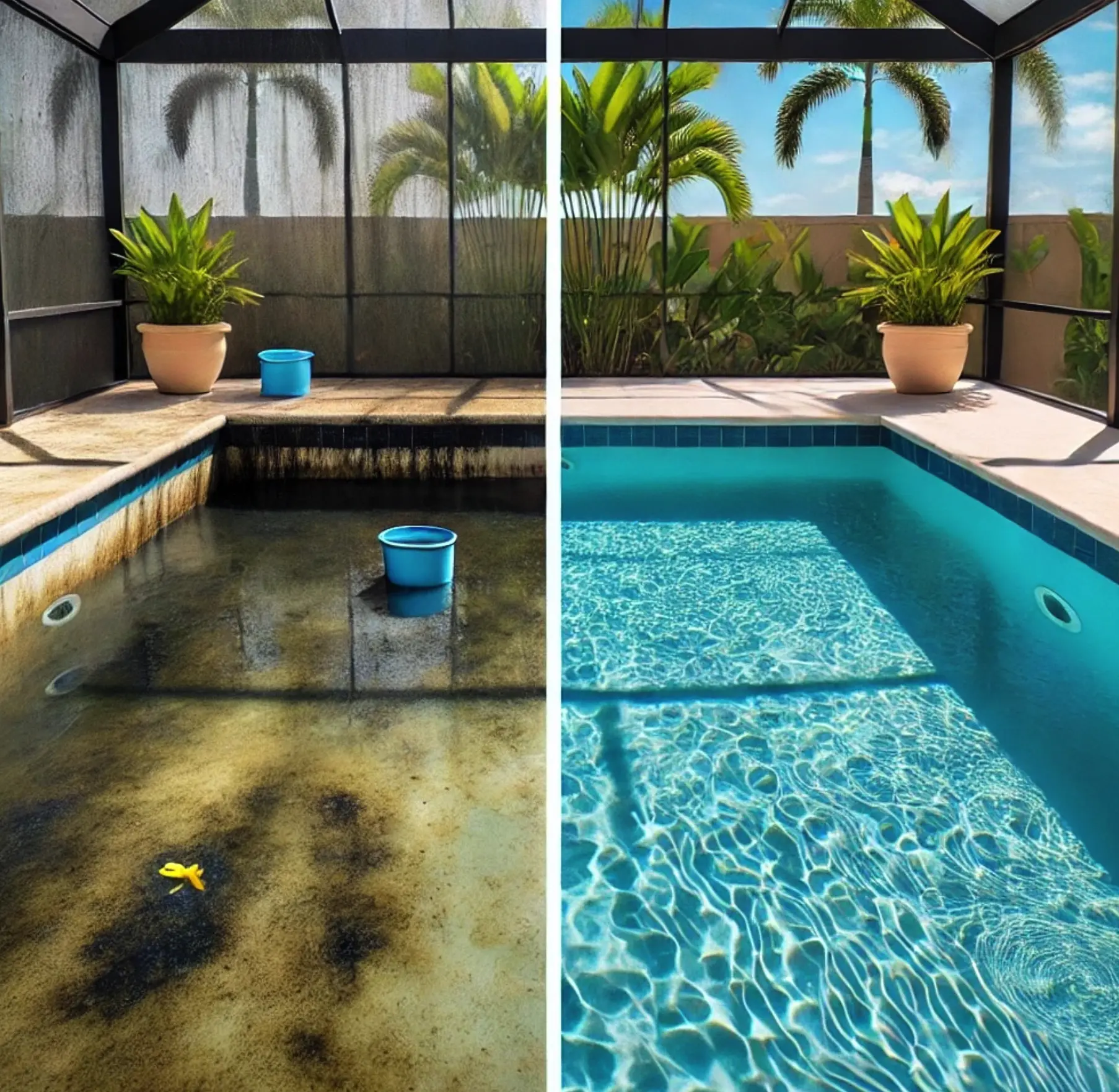
Why Algae Loves Concrete
Concrete is like a welcome mat for algae spores — especially when it’s damp, shaded, and covered in loose debris. Once the algae cells take hold, it doesn’t take long for a full-blown takeover.
Common Aussie trouble zones:
- Concrete floors around pool areas and patios
- Concrete garage floors with oil stains or water pooling
- Basement floors or shaded concrete driveways in VIC and NSW
- Coastal slabs with high humidity and salt exposure
- Outdoor surfaces under dense trees or leaf litter
Algae growth thrives in moisture-rich environments, especially when water can’t drain properly. That’s why routine patio cleaning and regular cleaning of outdoor surfaces are key.
Will High Pressure Alone Clear Algae?
Short answer? Yes — and it’s one of the most effective methods we use.
Pressure cleaning uses a high-pressure stream of water to lift algae stains and dislodge grime from the concrete surface. But here’s the catch: pressure alone won’t always kill the algae spores. So while your driveway might look clean after pressure washing, the algae might return if you don’t use a proper cleaning solution.
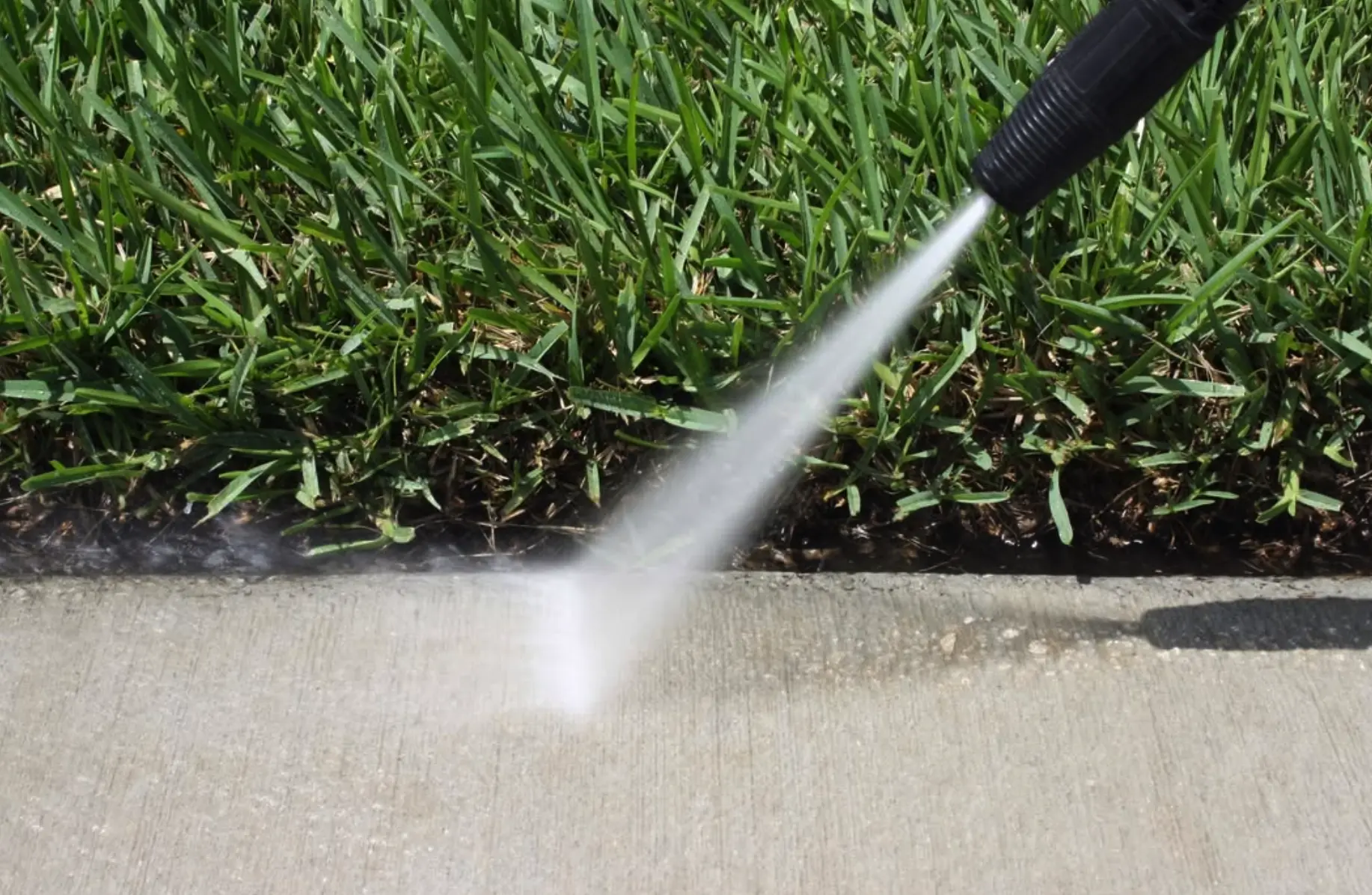
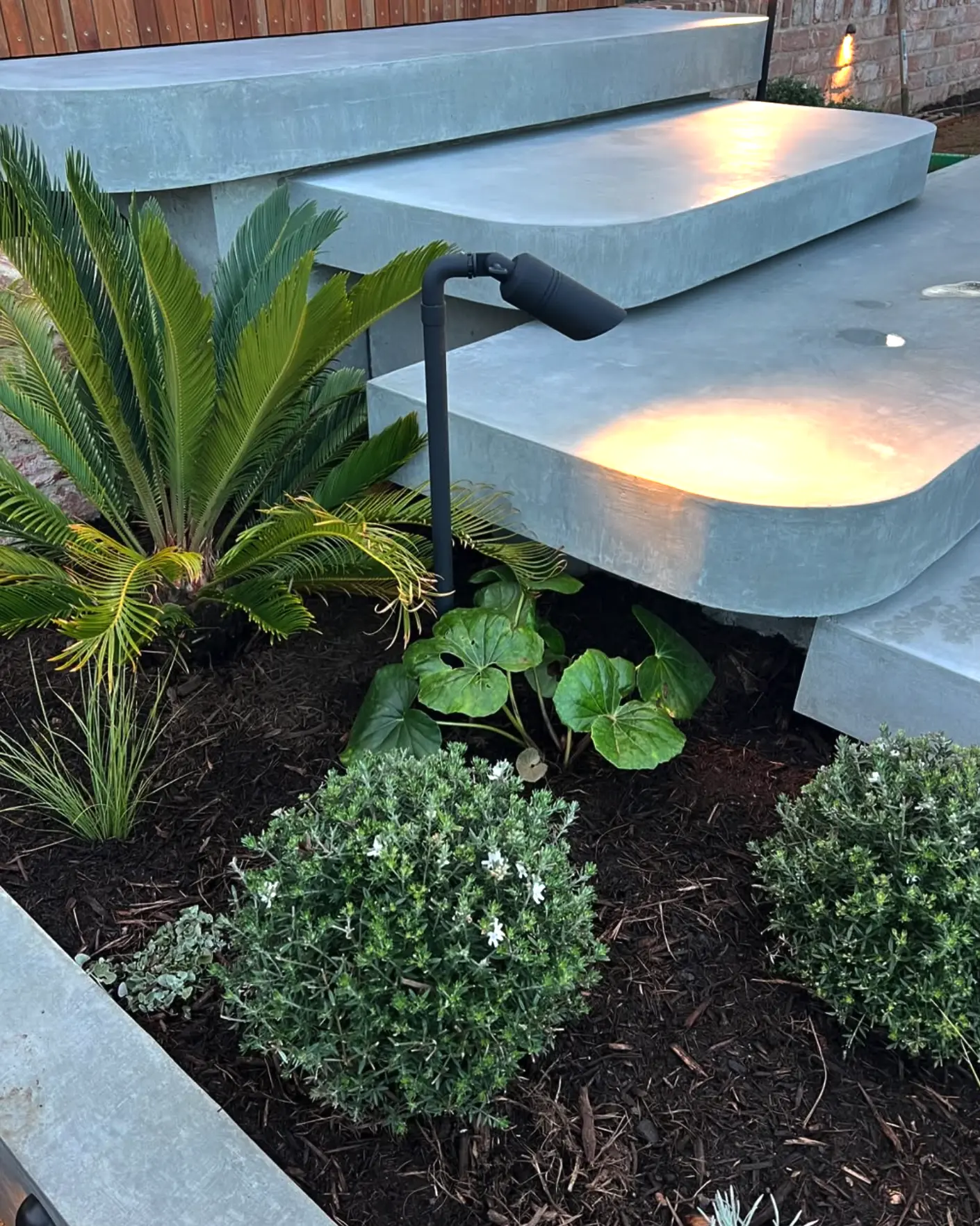
Benefits
- Quick algae removal from large areas
- Breaks up tough stains, surface dirt, and grime
- Restores the appearance of concrete patios and paths
- Works on a variety of surfaces — from cement floors to brick surfaces
But like any cleaning method, it’s not magic — and it has to be done right.
Tough on Algae, Easy on Concrete
Here’s our no-fuss approach to cleaning algae from concrete with a power washer:
Step 1: Clear the Area
- Remove furniture, pot plants, and toys
- Sweep away loose dirt and leaves with a push broom
- Use a stiff brush or deck brush on dry algae patches to loosen growth
Step 2: Choose the Right Nozzle
Use a 25-degree or 40-degree nozzle for general pressure washing. A fan nozzle covers more ground and is gentler on concrete. Avoid a 0-degree nozzle unless you’re targeting very stubborn stains — it can damage delicate surfaces.
Step 3: Apply a Cleaning Solution
- Oxygen bleach (safe on concrete, doesn’t harm delicate plants)
- White vinegar and warm water (DIY cleaning solution)
- Mild detergent or concrete detergent in your detergent tank
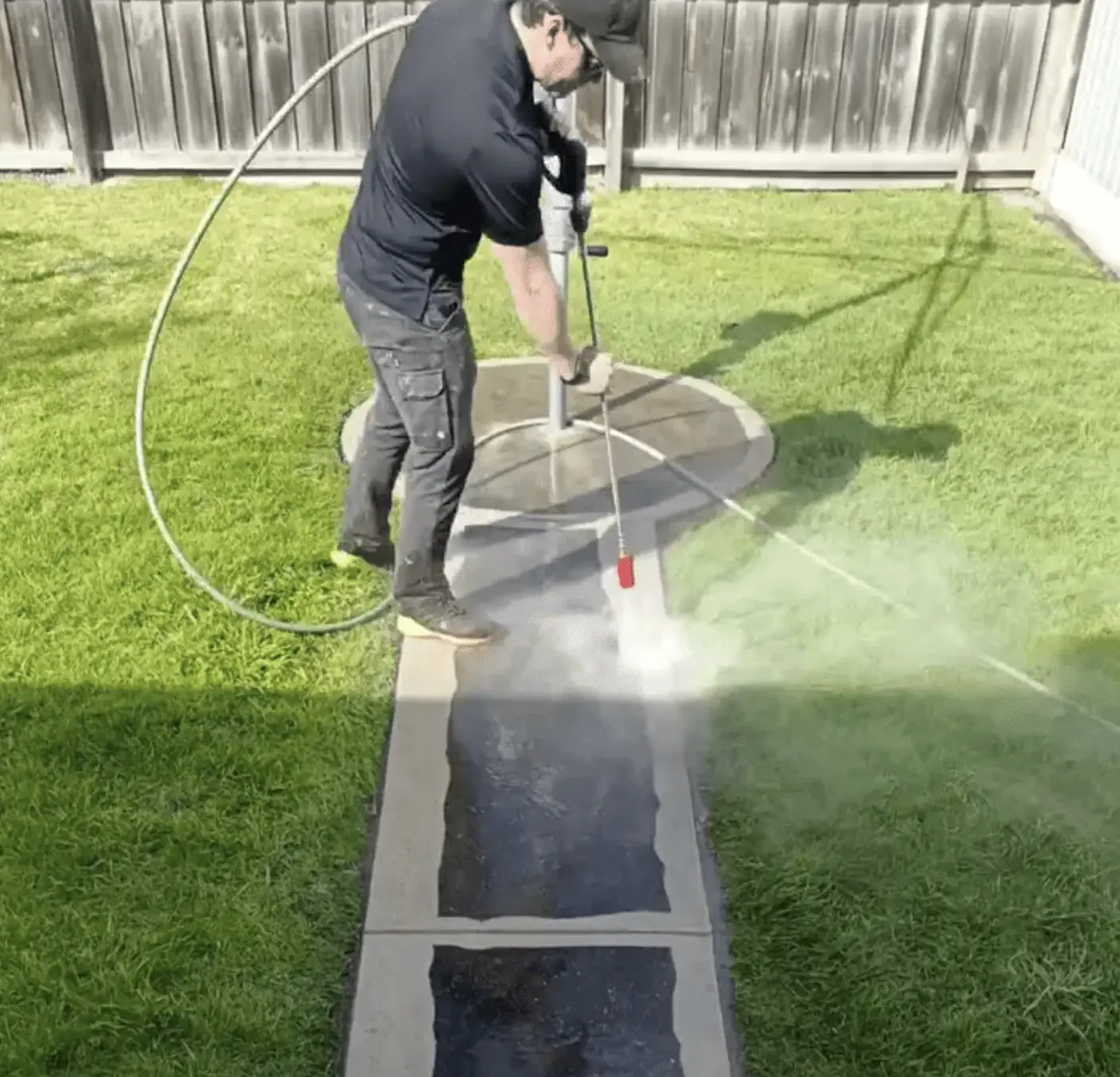
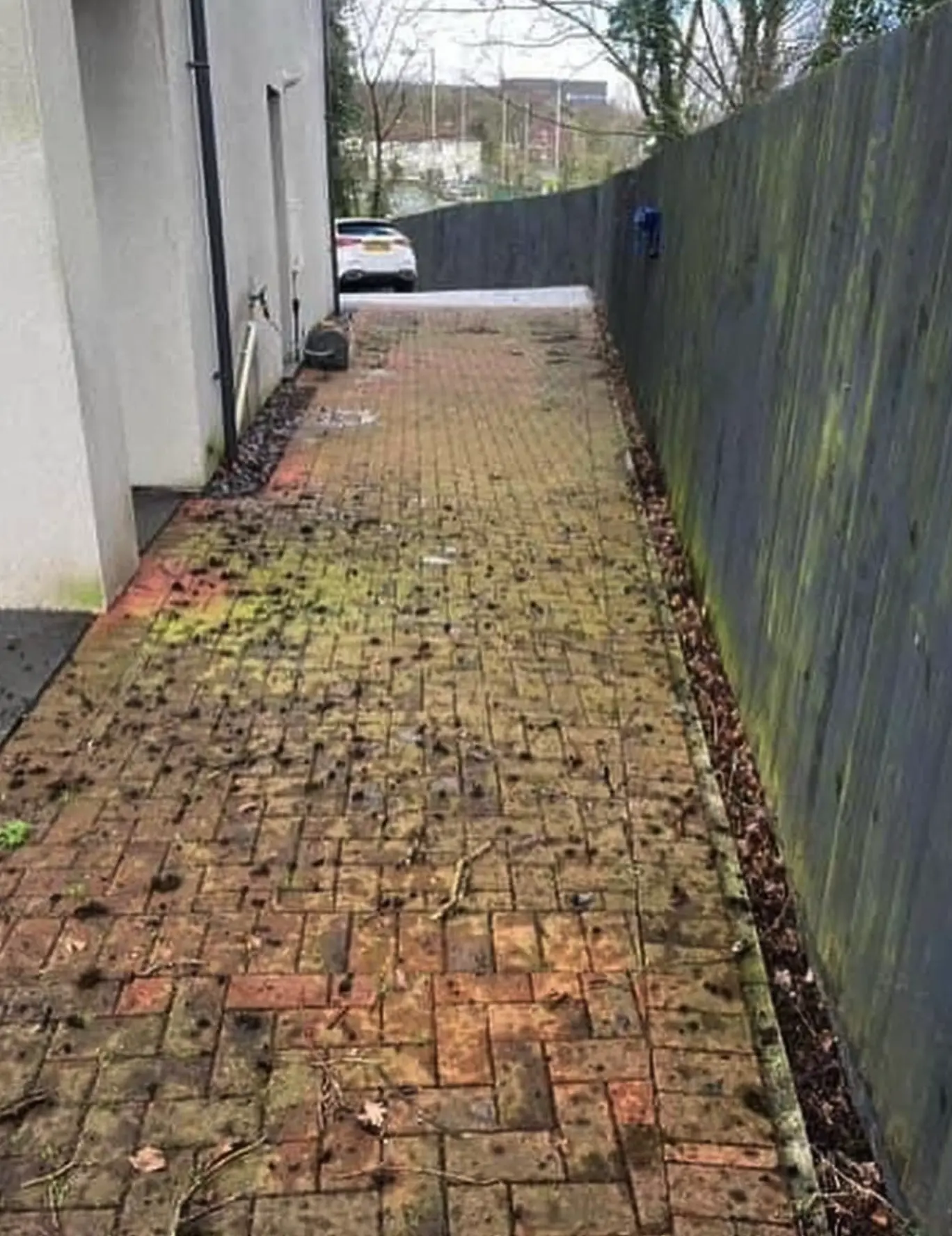
Step 4: Pressure Wash from Top to Bottom
Start at the highest point (if on a slope) and move in slow, steady lines using overlapping strokes. Keep the spray nozzle 20–30cm from the surface. Watch for the appearance of algae being lifted as the water pressure does its work.
Use a cleaner attachment for wide areas or textured concrete — it keeps water controlled and maximises cleaning capacity.
Step 5: Rinse with Clean Water
Flush the area with fresh water to remove residue, dead algae spores, and chemical cleaning agents. Inspect for any stubborn stains or rust stains — you might need a commercial rust remover for those.
In Melbourne, we recently helped a client who’d tried scrubbing green algae with boiling water and a stiff-bristled brush. After three weekends of sore shoulders and no real results, they called the Window Cleaning Melbourne Crew for backup. And that’s when we got to work — with the right attachments, correct nozzle, and a proper algae cleaner in hand.
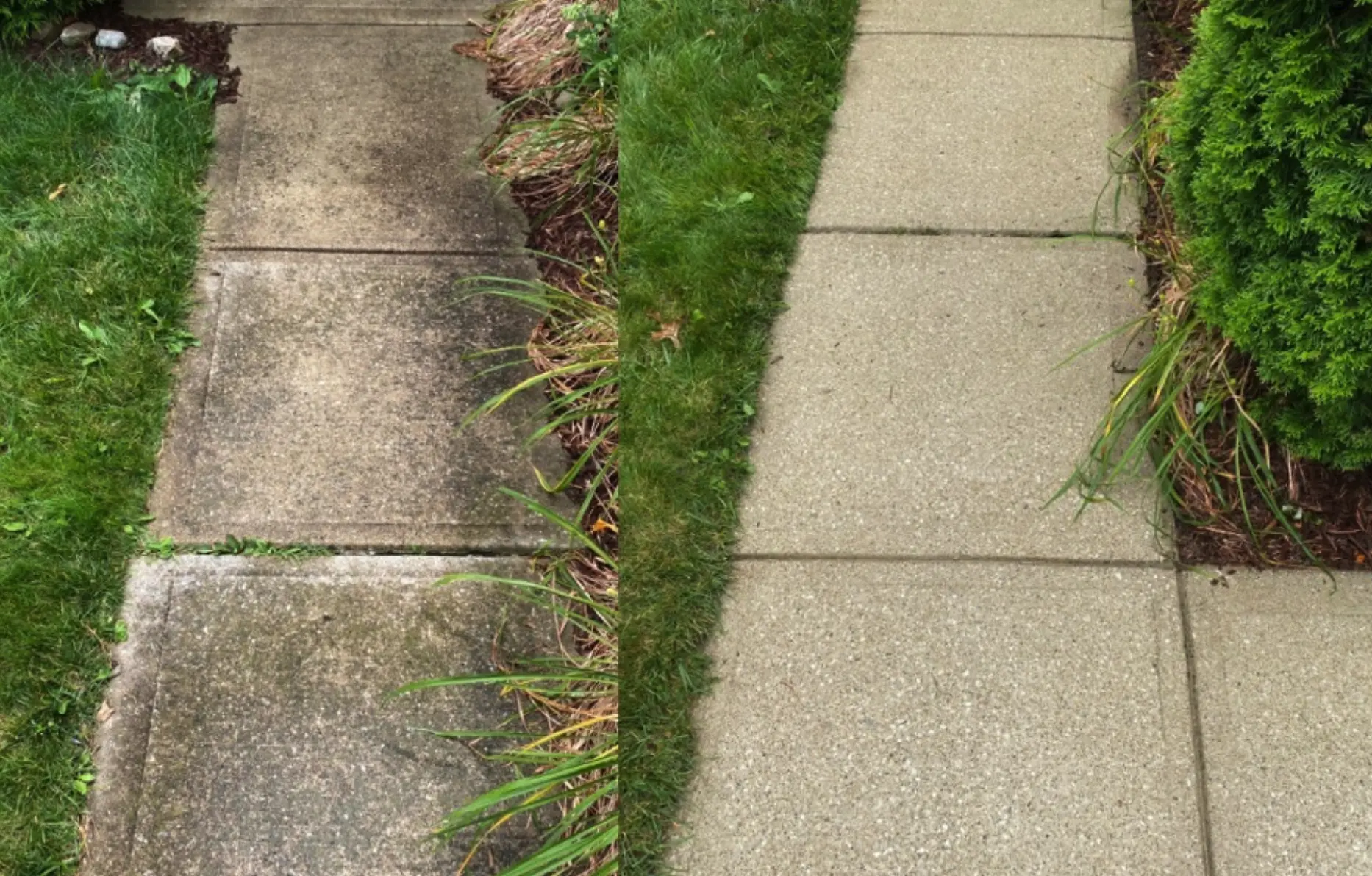
Best Cleaning Products and Solutions
Whether you go with commercial cleaners or a homemade batch, the cleaning solution matters.
Our field-tested combos:
- Oxygen bleach + warm water: safe, effective, won’t damage outdoor surfaces
- White vinegar + laundry detergent: a good DIY option for light algae on concrete floors
- Concrete cleaning solution: pre-mixed cleaners specifically designed for algae removal
If you’re working near edible plants, look for biodegradability for plants and avoid strong chemicals.

What to Avoid When Pressure
We’ve seen a few backyard disasters that prove how important it is to know what not to do.
Don’t:
- Use high pressure on delicate surfaces like painted concrete or coloured finishes
- Spray too close — it’ll rough up your slab faster than a brickie’s language on smoko
- Forget protective gear — algae plus concrete plus water = slippery as
- Skip pre-treatment — algae with spurts will be back in weeks without it
- Use chlorine bleach around organic materials — it’s a bad idea for the environment
Soft Washing vs Pressure Washing for Algae
If your concrete’s in bad condition, or if you’re dealing with algae from surfaces including render or decking, a soft wash might be safer.
Soft washing uses:
- A low-pressure hose or pump sprayer
- A gentle cleaning solution like vinegar or detergent
- A scrub brush or soft-bristled brush to agitate the algae
It’s slower, but safer — especially on older or decorative concrete.
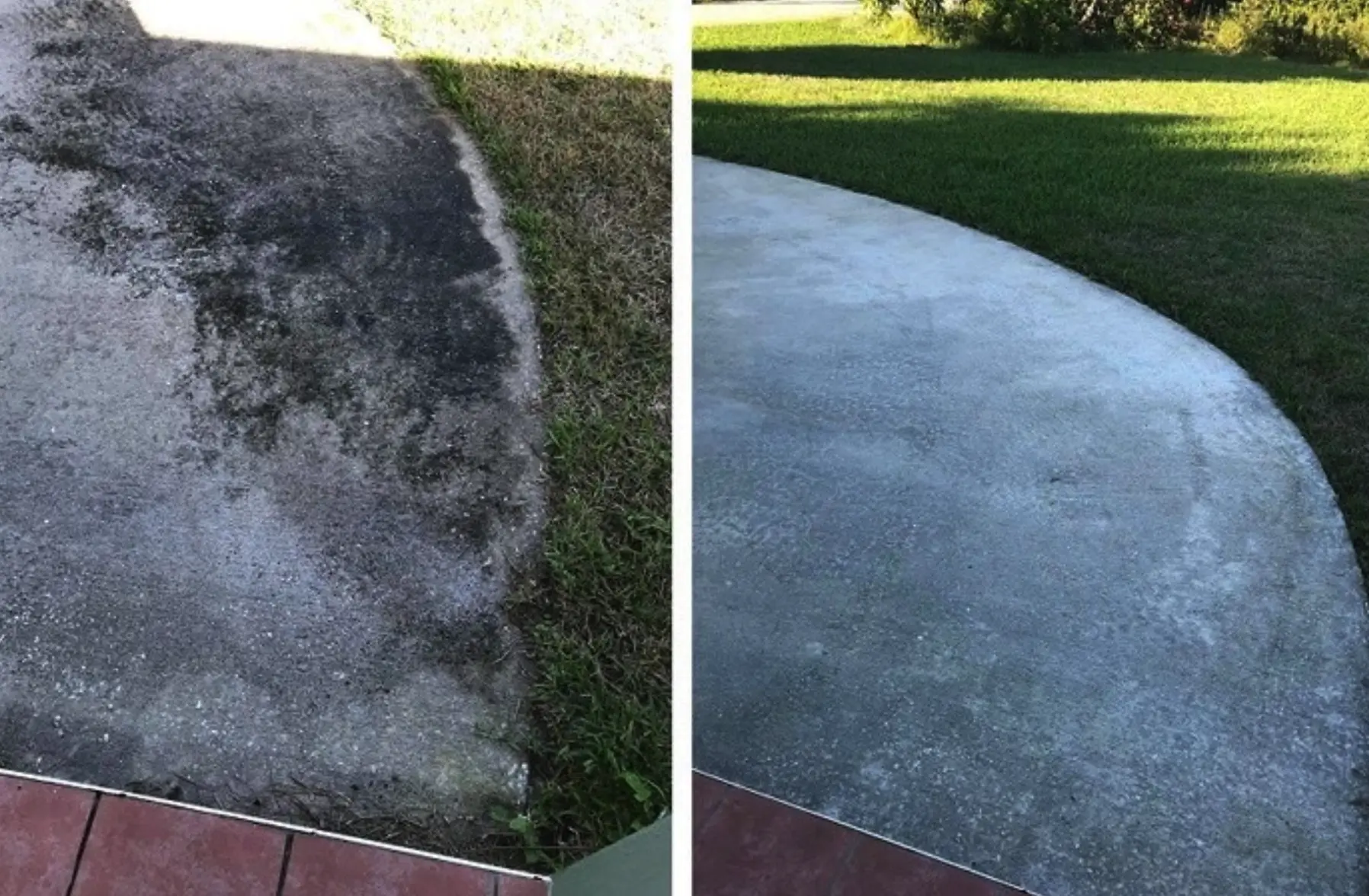
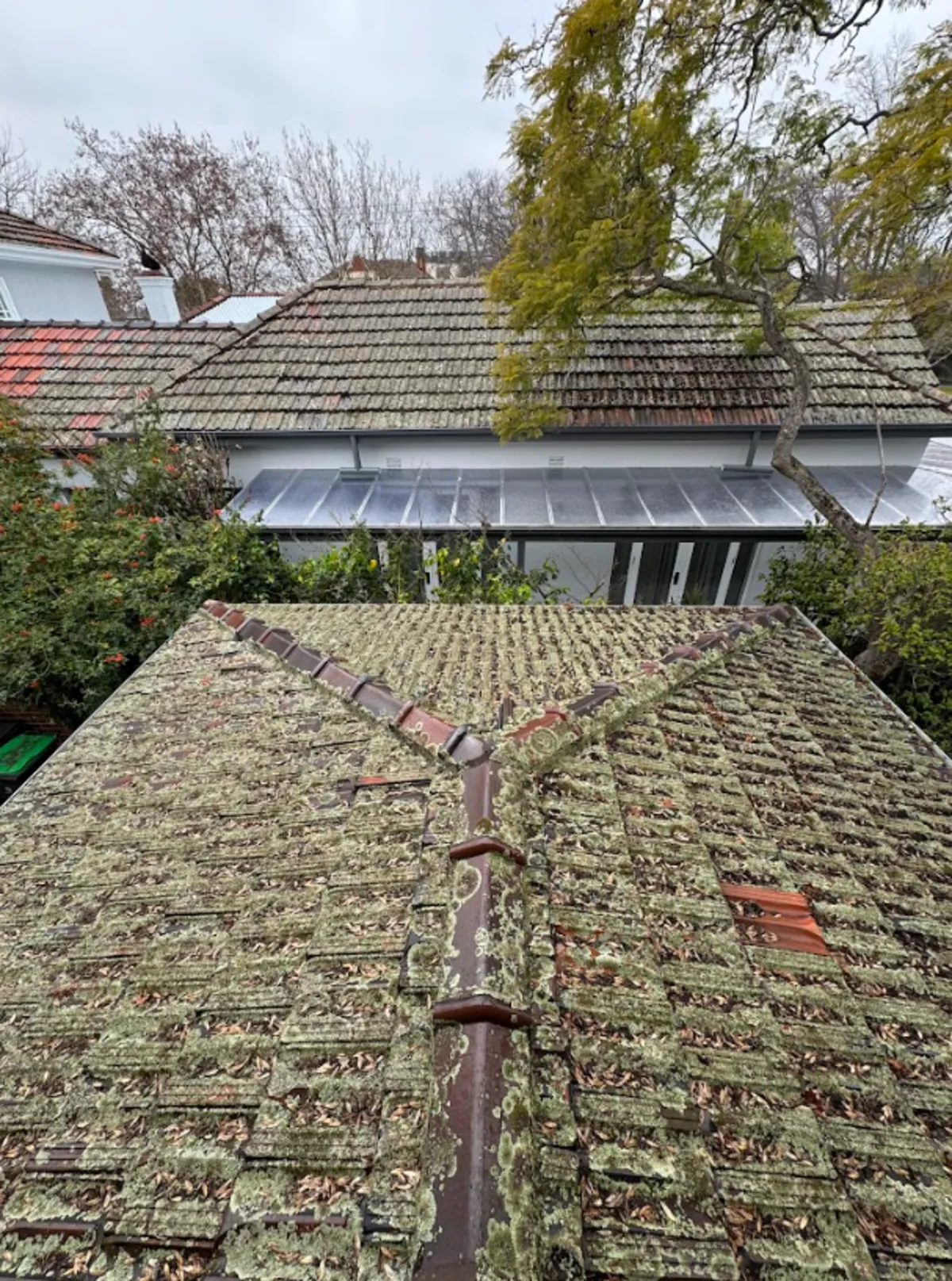
Should You Seal It Post-Wash?
Once you’ve removed the algae from patio slabs or concrete driveways, don’t stop there. Sealing the surface helps prevent future algae.
Benefits of sealing:
- Blocks water penetration and algae spore movement
- Prevents the return of surface dirt and grime
- Makes future cleaning easier
Use a penetrating concrete sealer after washing and allow the surface to dry thoroughly before applying.
Best Nozzles and Attachments for Algae Removal
| Tool | Best Use |
|---|---|
| 25-degree nozzle | Standard surface dirt and algae |
| 40-degree nozzle | Gentle cleaning on wide areas |
| Surface cleaner attachment | Efficient cleaning of driveways and patios |
| Detergent tank | Apply concrete detergent or algae stain remover evenly |
How Often’s Enough?
For routine cleaning, once or twice a year is ideal — more often if your property sits in a shaded, moist environment.
Spring is great for prepping the surface after damp winter months. Autumn helps clean up after storms and falling leaves.
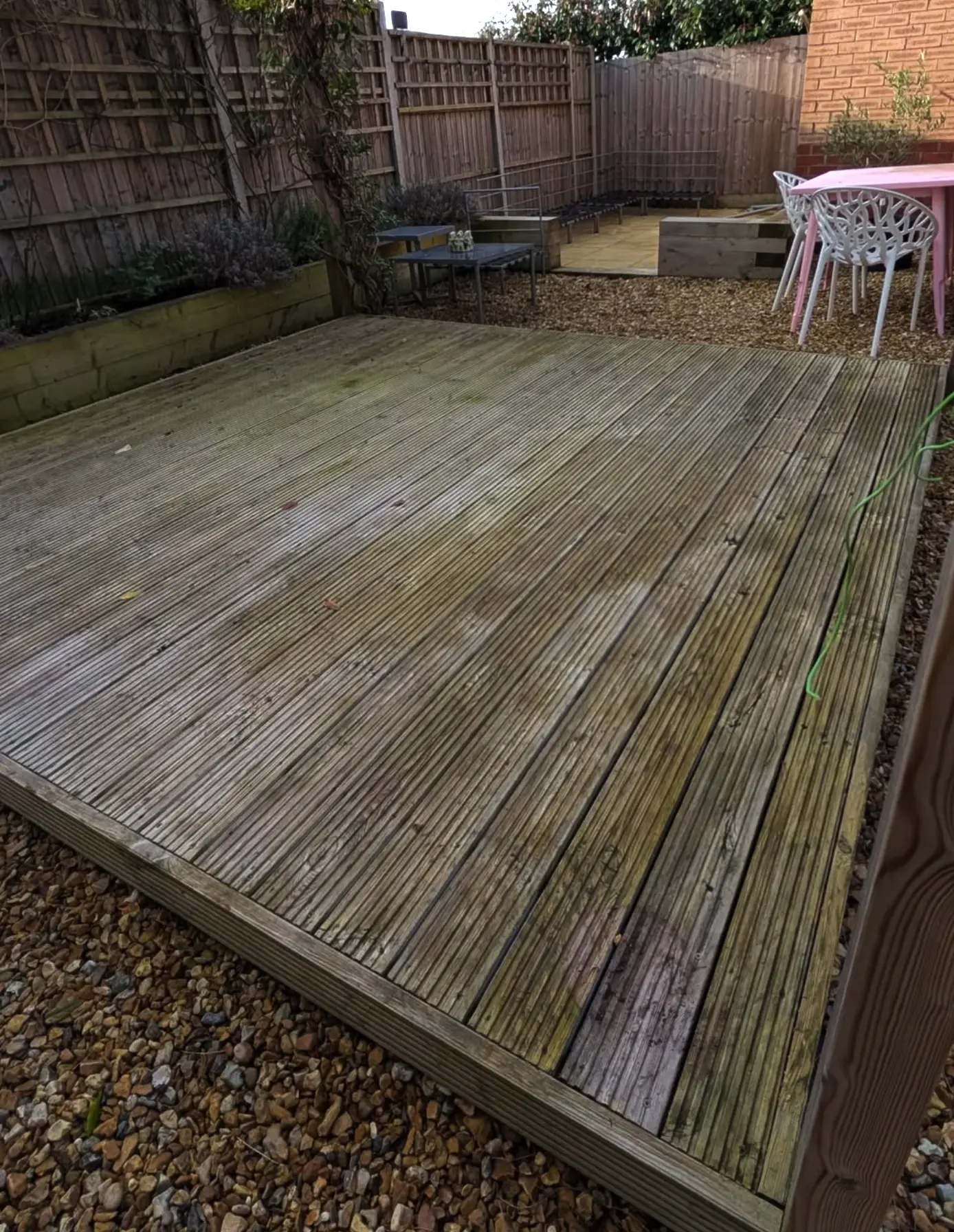
FAQ
Will pressure washing remove algae permanently?
No-pressure removes algae cells but not spores. Use a cleaning agent to kill spores and prevent algae spore movement.
Is vinegar safe for cleaning algae off concrete?
Yes — white vinegar is a natural, effective method. It works best mixed with warm water and mild detergent.
Can I use a power washer on painted concrete?
Be careful — high water pressure can strip paint or sealers. Use a soft-bristled brush or soft wash instead.
What if algae keep coming back after cleaning?
It means you didn’t treat the root cause — usually moisture or shade. Try sealing the surface and improving drainage.
Is chlorine bleach OK to use on concrete?
We don’t recommend it — it’s a dangerous idea around plants and pets, and can break down concrete surface over time.
